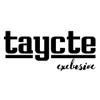Editor's note: "A Balancing Act" is the first in a series for Food Dive, where experts examine trends uncovered in earnings reports and discuss strategies that impact the balance sheet.
For packaged foods manufacturers, acquisitions are more than a smart opportunity — they're a necessity. With the right financial strategy, a company can bolster its portfolio and income statement despite the current performances of its existing brands and product categories.
However, not all acquisition targets are created equally. Without the right strategy, a company can lose money, time, and effort.
Acquisitions can ensure penetration in disruptive categories and facilitate future growth. The acquisition process comes with a range of potential gains and losses for the acquiring company. The acquirer assumes risk and investment responsibility, but also benefits from additional income streams and synergies in distribution, marketing, and customer acquisition.
For example, General Mills' 2014 acquisition of Annie's has since led to collaborations between the natural and organic foods brand and General Mills' existing legacy brands, such as Progresso and Yoplait. These collaborations have added new product segments and revenue streams for Annie's, and thus General Mills, while also leveraging the supply chain expertise of General Mills' other established brands which have lost market share to competitors in recent years.
Meeting the criteria
Before performing due diligence, a major manufacturer has criteria it uses as filters to either eliminate a potential acquisition or add it to the list.
Companies tend to have a few criteria that acquisition targets must meet for serious consideration, according to Jamil Satchu, partner and practice leader of growth consulting at IRI Strategic Analytics:
- Size or sales minimum (For example: No less than $25 million in annual revenue)
- Growth of category compared to overall food and beverage industry (Category is growing at 5x the rate of the industry)
- Growth of brand compared to overall category (Brand is growing at least 3x faster than category)
- Tier of brand within category (Premium tiered products are becoming more attractive acquisitions, said Satchu. That's in part because this tier can be more profitable.)
- Proof that the category drives growth as opposed to churn ("If we innovate and invest in this category, are we actually going to drive growth or is it just replacing old SKUs without growth?" Satchu said.)
- Is the category sourcing volume not just from existing heavy buyers but also medium and newer buyers?

Ultimately, what an acquiring company is looking at is how this brand could impact revenue and profitability from a five- to six-year perspective, according to Todd Giles, managing director for Food and Consumer at BMO Harris Bank's Atlanta office.
"In terms of what they're looking for, the financials aren’t there, but they like the idea, they like what it brings to the table," said Giles. "And they like how it complements their product offering in the next five to 10 years."

The waiting game
Another common tactic is for a company to acquire a minority stake in the smaller company, said Giles. The acquiring company can assess the smaller company's performance from a closer perspective before deciding whether to purchase the company outright. For example, Coca-Cola purchased a 30% minority stake in cold-pressed juice maker Suja rather than purchasing the entire company last year.
"When you're looking at a startup, the emphasis is always on … whether or not I'm willing to take this calculated risk and invest in this company to facilitate that growth and make a preemptory control position in this company in the next five to six years," said Giles.
What manufacturers stand to gain
The most obvious gain from an acquisition comes in the form of more rapid sales growth, primarily driven by volume rather than pricing, said Satchu.
- WhiteWave surpassed $1 billion in revenue for the first time late last year thanks to the performance of its Vega and Wallaby acquisitions.
- Aside from its recently failed Premier Foods takeover, McCormick has used strategic acquisitions in key product and regional markets to combat slowing sales and profits, including three acquisitions in 2015.
- Last year, Hain Celestial reported its 20th consecutive quarter of double-digit sales growth on the strength of its acquisitions.
- Two key acquisitions last year positioned Flowers Foods in the attractive and fast-growing organic bread segment.
- Smucker saw significant gains in the most recent quarter, a 37% sales increase, thanks to its acquisition of Big Heart Pet Brands during fiscal 2015.
Another gain comes in the form of access to a greater consumer base. The acquiring company can scale economies of marketing and sales for existing brands by leveraging the new infusion of potential customers, said Satchu.
"(Acquiring companies) gain economies of sales because often you're selling new products to the same consumers," said Satchu. "So your cost to merchandise, cost to market, and cost to access those consumers are reduced."
Why expenditures don't always equal a loss
The acquiring company will clearly lose cash assets and/or add debt liabilities to its balance sheet upon closure of the deal. However, that loss won't be significant if the acquiring company has done its due diligence and snaps up the startup at the right inflection point on its growth track, Satchu said.
Additional expenditures may also be necessary to scale the startup's operations and marketing efforts, according to Satchu. Slotting fees, for example, enable the startup to acquire distribution in more mainstream channels. Investments in R&D drive innovation growth, and operational investments scale production to meet increasing demand. Media investments support this potential growth by improving the brand's reach and engagement with consumers.
"Those are one- or two-year investments that should significantly drive growth in the longer term," said Satchu. "In the short term, those can be seen as impacts to both the income statement as well as the balance sheet. But longer term, if the due diligence has been done right, then those yield greater returns than their investments."
With any startup or new brand comes the risk of failure. Brand growth or category growth could be short-lived if the primary attributes or benefits of the product or category fall off consumers' radar or is cast in a negative light. Maintaining capital and cash flow are often key reasons why startups fail.
"Quite often, that's the biggest challenge — the success that drove the growth in the company and the sort of secret sauce is lost as it gets incorporated into a larger organization," said Satchu.
With consumer perceptions and demands the way they stand, it's not hard to see why acquisitions are such an attractive, if not required, growth strategy for major manufacturers.
"That's what they're betting on, what they're taking that calculated risk on — that I like this product, I want to see what it does," said Giles. "I'm willing to take some of the risk from an equity perspective and see where this company grows. And if it does alright, I want to be the first in line to buy this company in the next five to six years."
If not first in line to buy, a manufacturer could be among the last to capitalize on a burgeoning product category or ingredient trend. The time it takes to bring a new product to market can stifle a manufacturer's growth in trending areas. Instead, time and money could be more strategically spent on an acquisition that opens that realistic door for the larger company.
The "A Balancing Act" series is brought to you by BMO Harris Bank, a leader in commercial banking. To learn more about their Food & Beverage expertise, visit their website here. BMO Harris Bank has no influence over Food Dive's coverage.





















